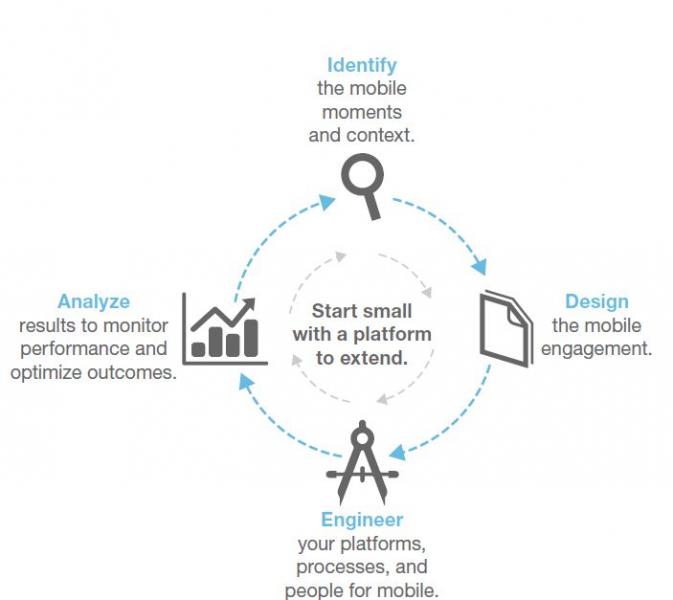The IDEA Cycle — A Better Way To Think About Mobile Development
 What are the four words everyone involved in mobile strategy should fear?
What are the four words everyone involved in mobile strategy should fear?
"Let's build an app!"
The reason you should fear these words is that they will lead to pain. Your CEO, or your CMO, or somebody else in your company has noticed that mobile engagement exists. Great. Now they're ready to plunge right in and create something without thinking it through. And if you're involved in mobile development, this means a whole lot of pain in your future.
There is a right way to think about mobile. It's called the IDEA cycle, and it's the central idea in our new book The Mobile Mind Shift.
When you're wondering how to engage with your customers on mobile, follow these four steps, which you'll remember with the acronym IDEA:
- Identify the mobile moments and context. Think through your customer's day and how they interact with you. What are the moments in which she might turn to mobile? Is she ready to check in for a flight? Wondering what to buy her daughter for Christmas? Realizing that her prescription needs to be refilled? For each of these moments, there is a context — the customer's location, history, and state of mind. Taken together, these moments represent the set of possible times and places in which mobile can help.
- Design the mobile engagement. Here's where you evaluate those mobile moments to determine which ones are most beneficial to the customer, and helpful to you as well. It's also where you think about the potential ways to interact, such as sending a push notification, displaying content, enabling sharing, or presenting a possible transaction.
- Engineer your platforms, processes, and people. The expensive part of mobile is not in the app or mobile site development; it's in the systems engineering. You'll want to think about systems like reservation systems and CRM systems — what will you have to change to make them mobile-ready? Think also about how mobile changes your business processes and your development teams. If you don't plan for the depth of these changes, you'll often find yourself designing features that can't be implemented effectively — or put undue demands on corporate systems that were never engineered for them.
- Analyze results to monitor performance and optimize outcomes. This is the missing step in most plans, sadly. If you do not instrument your applications, you have no idea what is working and what's not — and where the opportunity lies. People who build apps often gain insights into their customers' behavior, but only if they're in a position to analyze the data the app generates.
The last important thing to realize is that the IDEA cycle is a cycle. Apps and mobile sites don't stand still. Unless you've designed a process to continually improve the application, you're not done. Inevitably, you need to identify, design, engineer, and analyze again, so plan for it.
We interviewed more than 200 companies about mobile, and inevitably, the successful ones were using some variant of this set of steps. Learn the IDEA cycle. It's your best response when you hear those dreaded words, "Let's build an app!"
If you're looking to hear more on this, sign up for my free Webinar on June 4. Talk to you then!